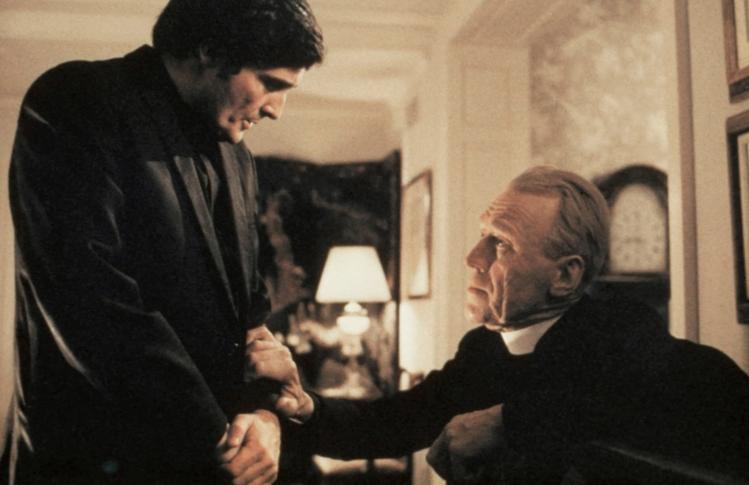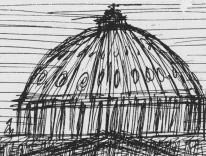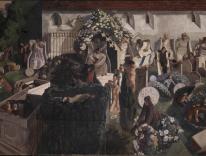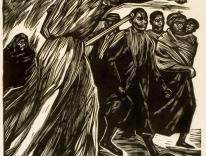
Nathaniel Hawthorne had an ambivalent regard for his once-prominent Puritan ancestors. His great-grandfather was a judge who presided over the trial and execution of witches in seventeenth-century Salem, Massachusetts. “The remote past has to be recovered with considerable effort for there ‘the Actual and the Imaginary may meet,’’’ the political theorist Judith Shklar writes, quoting Hawthorne. “It is because it is so different from the present that it enlightens us about our actual selves, here and now, about our possibilities, our beliefs, and our conduct. It is an education for the present moment.”
I was reminded of Shklar’s comments on Hawthorne and the conundrums of understanding the past when reading Carlos Eire’s terrific piece in the September issue of Commonweal on the Church’s traditional acceptance of the seeming impossibility of acts of levitation and bilocation, especially in the lives of saints. As Eire writes, “What kind of nonsense is this?” That, at least, is our usual reaction to testimonies regarding such phenomena. Yet such “wild facts,” Eire reminds us, were common and widely believed in the Church’s past. How should we make sense of those claims now? To be sure, such “extremely rare events are seldom taken seriously outside certain belief systems,” Eire writes, but “they most certainly do have a broader context into which they fit.” Understanding that context is key to understanding not only our Catholic ancestors but also, as Shklar notes, ourselves. Quoting the historian Lucien Febvre, Eire goes further. We must accept “the strangeness of the past as an essential rational feature of the past, not as something irrational.” As Febvre argues, “To comprehend is not to clarify, simplify, or to reduce things to a perfectly clear logical scheme. To comprehend is to complicate, to augment in depth. It is to widen on all sides. It is to vivify.”
Which brings me to the recent celebration, by some conservative Catholics, of the fiftieth anniversary of the Academy Award–winning horror movie The Exorcist. Improbably, they see that fright film as an evangelical tool to correct a contemporary Church that has abandoned its supernatural beliefs. This nostalgia regarding 1970s schlock coincided with the recent death of William Friedkin, the film’s director, who himself professed a belief in the kind of demonic possession flamboyantly depicted in the movie. “I made the film as a believer, not as a skeptic,” Friedkin claimed.
The film was based on the best-selling novel by William Peter Blatty, a Catholic graduate of Georgetown University. Blatty wrote the movie’s screenplay and produced the film as well. He was a known quantity in Hollywood, having written a number of screenplays for successful film comedies, including the Pink Panther sequel A Shot in The Dark. Aspiring to something more serious, he said he wrote the book “quite frankly as an apostolic work.” He subsequently claimed that the enormous popularity of the film brought many people back to the Church.
Critical reception of the movie was mostly negative at the time. “The crushing blunt-wittedness of the movie version…tends to bear out Blatty’s apostolic claims,” wrote the legendary New Yorker film critic Pauline Kael. “Whatever Blatty’s claims, if The Exorcist scares people that’s probably all it has to do, in box-office terms, and that’s all the whole unpleasant movie is designed to do,” she wrote. “It is the religious people who should be most offended by this movie. Others can laugh it off as garbage, but are American Catholics willing to see their faith turned into a horror show? Are they willing to accept anything just as long as their Church comes out in a good light?”
I hope not, and yet I was surprised to see the usually sober-minded Brad Miner praising both The Exorcist and a recently released spinoff, The Exorcist: Believer, at The Catholic Thing. In doing so, he notes Believer is “not as well made and acted as the original,” but as consolation “there’s a jump-scare that’s good as can be.” His main complaint is that the new movie takes a predictably boring ecumenical approach to exorcism. “You’ll excuse me if I point out that we Catholics are the ones who actually cast out those damn demons!” Miner writes. If I read him correctly, Miner is being both coy and serious.
Less coy and much more serious, was Matthew Walther’s encomium to The Exorcist in the New York Times. Walther is the editor of the Lamp, a conservative Catholic literary journal. He argues that The Exorcist is “the best film ever made about the Roman Catholic Church.” Why? Because it eschews the secular, worldly complications of Catholic lives dramatized in movies like A Man for All Seasons and Becket. Instead, it unreservedly embraces “a transcendent moral and metaphysical order” that is “premised on the idea that the claims of the Catholic Church makes for itself are true—not in some loose metaphorical sense but literally.”
As Walther notes, the story Blatty wrote juxtaposes those who believe in the traditional Catholic claims about sin and the reality of the devil with so-called post–Vatican II modernizers, who question the old understandings while emphasizing the Church’s more worldly responsibilities for the poor, the disenfranchised, and even those outside the fold. “We live in a moral universe in which the stakes are not life and death—as they end up being in many conventional religious dramas—but heaven and hell,” Walther writes of The Exorcist.
I was not surprised to learn that Blatty, who died in 2017, had mounted a 2013 campaign to have the Vatican remove Georgetown’s right to call itself a Catholic and Jesuit institution. Among his complaints was that abortion-rights advocates had spoken on campus, the theological faculty was no longer reliably orthodox, theology and philosophy course requirements had been abandoned, and the university had failed to implement Pope John Paul II’s Ex corde ecclesiae (1990), a guide for theological orthodoxy at Catholic colleges and universities.
Walther and Blatty are right that belief in traditional Catholic ideas about the devil, demons, good and evil, sin, hell, heaven, and Judgment Day have atrophied. But the idea that a horror movie might be some sort of remedy for that loss is dubious. More than thirty years ago, the anthropologist Mary Douglas tackled this problem in a short but pungent essay in the London Tablet (“The Devil Vanishes”). Douglas examined the broader context into which what Eire calls the “wild facts” of the past fit. “In the anthropological perspective it would seem that the devil has been gradually losing his grip on the mind of Western Christians. He has become a pantomime figure, like Dick Whittington’s cat, or a scary theme in horror films, like Dracula,” Douglas wrote. “More modern people believe in God than believe in the devil. In the anthropological long view, God has changed a lot too. He is made out to be more indulgent than before. He does not divide sheep from goats, or condemn his creatures to eternal torment…. It is not only the devil who has taken a back place, but the whole angelic host.”
As Douglas explains, ideas about sin and the devil can operate rationally in closed communities as ways in which neighbors who deal with each other face-to-face hold each other accountable. “But if there is no community, there is no such debate; and with no public debate the idea of sin has lost one of its public functions,” Douglas writes. In the open, mobile, highly atomized modern West, the idea of sin becomes politicized. “Not sin against God, but sin against humanity has taken the old rhetorical role,” she observes. In more tightly knit communities, practices such as exorcism are a way to reintegrate the sinner back into the community by blaming the demon rather than the possessed. “It allows the sinner to be distinguished from the sin. It was not the sinner’s fault that he succumbed; the devil was too strong for him: fortunately the community religion has resources which will expel the evil spirt and cleanse the sinner,” Douglas writes.
As Hawthorne reminds us, recovering the past requires a considerable effort of the imagination. Douglas’s anthropological perspective helps us, in Febvre words, “complicate and vivify” our understanding of the Church’s traditional teachings about sin and the devil. The past truly is a foreign country, and despite what champions of The Exorcist think, we cannot live there. The point is not that we are right in our agnosticism regarding demons and exorcism or that our medieval and Renaissance ancestors were wrong. That is entirely too simplistic and to ahistorical a way to understand the difference. Still, in making sense of what our ancestors believed by placing it in context, we can get a sense of what needs to be done to keep the truths of the faith alive. It can be an “education for the present moment.” If Douglas is right, that education teaches us that we need to build communities that bring us face to face with our neighbors. A revived sense of how we have sinned, and how we can be forgiven, will follow.


